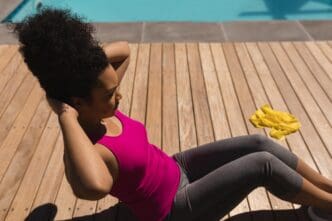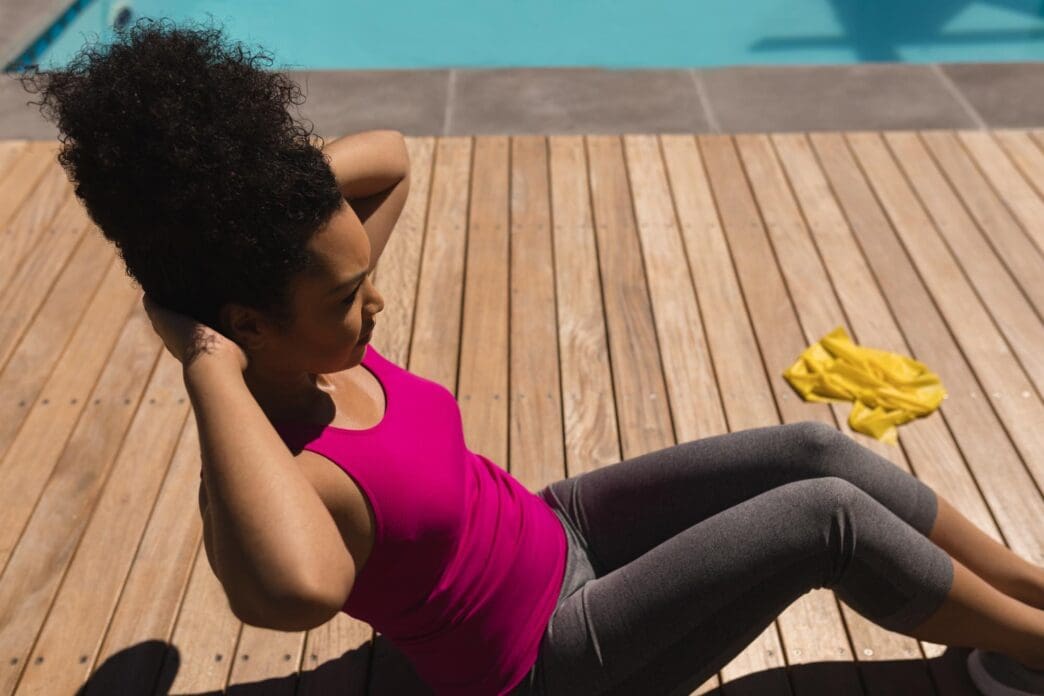A Quick Takeaway
The Story Behind the Trend
How to Make It Work for You
The Community View
For anyone embracing the vibrant, active lifestyle of Miami Beach, from sunrise yoga on the sand to intense gym sessions or paddleboarding in Biscayne Bay, muscle soreness is an inevitable companion. Foam rolling, a simple yet incredibly effective self-myofascial release technique, offers a potent solution to alleviate this discomfort, improve flexibility, and enhance recovery, allowing you to maintain peak performance and enjoy everything this dynamic city has to offer. This practice, performed using a cylindrical foam tool, involves applying pressure to specific points on your body to release muscle tightness and improve blood flow, making it an essential component of a sustainable wellness routine for athletes and active individuals alike.
Understanding Foam Rolling: Self-Myofascial Release
Foam rolling is a form of self-myofascial release (SMR), a technique used to massage away adhesions and scar tissue that can build up in your muscles and fascia. Fascia is the connective tissue that surrounds and supports your muscles, and when it becomes tight or restricted, it can lead to pain, stiffness, and reduced range of motion.
By applying sustained pressure with a foam roller, you can help to smooth out these knots and improve the elasticity of your tissues. This process encourages better blood circulation to the area, which in turn delivers more oxygen and nutrients to the muscles while helping to flush out metabolic waste products.
The Science Behind the Roll
The effectiveness of foam rolling stems from its ability to influence both the mechanical properties of your tissues and your nervous system. When you roll over a tight spot, the pressure helps to break down adhesions within the fascia and muscle fibers, allowing them to move more freely.
Furthermore, foam rolling can stimulate sensory receptors in your muscles, sending signals to your brain that can help to reduce pain perception and promote relaxation. This neurological response can decrease muscle tension and improve overall flexibility, making it easier to move without discomfort.
Who Benefits from Foam Rolling?
Virtually anyone engaged in physical activity can reap significant benefits from incorporating foam rolling into their routine. Athletes, from professional competitors to weekend warriors, use it to enhance performance and speed up recovery.
Individuals with sedentary lifestyles, such as those who spend long hours at a desk, can also find relief from chronic stiffness in the back, neck, and hips. Whether you’re a runner pounding the boardwalk, a weightlifter pushing your limits, or simply someone looking to alleviate everyday aches, foam rolling offers a versatile and accessible solution.
Integrating Foam Rolling into Your Miami Beach Routine
Making foam rolling a consistent habit is key to unlocking its full potential, especially for those living an active Miami Beach lifestyle. It can be strategically used both before and after your workouts to maximize its benefits.
Pre-Workout Preparation
Incorporating foam rolling into your warm-up can significantly prepare your muscles for activity. A 5-10 minute session can increase blood flow, improve tissue elasticity, and enhance your range of motion, allowing for more effective and safer movements during your workout.
For instance, rolling your quads and hamstrings before a beach run can help prevent strains, while targeting your lats and chest can improve posture for paddleboarding or swimming.
Post-Workout Recovery
After a challenging workout, foam rolling plays a crucial role in mitigating delayed onset muscle soreness (DOMS). By rolling your fatigued muscles, you can help to reduce inflammation and speed up the removal of lactic acid and other metabolic byproducts, thereby accelerating the recovery process.
This post-exercise ritual can make a significant difference in how quickly you’re ready for your next session, keeping you active and pain-free in the Miami heat.
Rest Day Maintenance
Even on rest days, foam rolling can be beneficial for maintaining flexibility and addressing any lingering muscle tightness. It’s an excellent way to keep your tissues pliable and prevent the accumulation of tension that can lead to chronic issues.
Consider it a proactive measure to keep your body in optimal condition, ready for whatever Miami Beach adventure comes next.
Choosing the Right Foam Roller
With a variety of foam rollers available, selecting the right one can enhance your experience and effectiveness. Rollers differ primarily in density, texture, and size.
Density and Texture
Softer rollers are ideal for beginners or those with sensitive muscles, providing a gentler introduction to SMR. As your tolerance increases, you might opt for a medium-density roller, which offers more pressure and deeper tissue penetration.
Firm or “hard” rollers are best for experienced users or those with very dense muscle tissue. Textured rollers, featuring grids or knobs, are designed to mimic the fingers and thumbs of a massage therapist, targeting specific trigger points with greater intensity.
Size and Shape
Standard full-size cylindrical rollers are versatile for larger muscle groups like the back, quads, and hamstrings. Shorter rollers or foam balls are excellent for targeting smaller, harder-to-reach areas such as the glutes, calves, and shoulders.
Consider your primary use and the areas you most frequently need to address when making your selection. Many active individuals find benefit in owning a variety of rollers to address different needs.
Key Techniques for Effective Rolling
Proper technique is paramount to maximize the benefits of foam rolling and avoid injury. Approach each session with mindfulness and listen to your body.
Slow and Controlled Movements
Roll slowly, moving about an inch per second, allowing your muscles to adapt to the pressure. Fast rolling can be counterproductive, as it doesn’t give your tissues enough time to release tension.
When you encounter a tender spot, pause on it for 20-30 seconds, applying steady pressure. Breathe deeply and try to relax into the discomfort, as this helps the muscle to release.
Targeting Specific Muscle Groups
Focus on one muscle group at a time. Common areas to roll include the quadriceps, hamstrings, glutes, calves, IT band, upper back, and lats. Avoid rolling directly over joints or bony prominences, as this can cause irritation.
Maintain proper body alignment and use your hands or other leg to support your weight, adjusting the pressure as needed. This control ensures you’re targeting the muscle, not putting undue stress on vulnerable areas.
Common Mistakes to Avoid
While foam rolling is generally safe, certain practices can reduce its effectiveness or even lead to injury.
Avoid rolling too quickly, as this prevents the deep tissue release necessary for lasting relief. Do not apply excessive pressure, especially when starting out, which can cause bruising or exacerbate inflammation. Always listen to your body; sharp, radiating pain is a sign to ease up or move to a different area, while a dull, aching sensation is typically normal.
Additionally, avoid rolling directly over your lower back, as this can put undue stress on your spine. Instead, focus on the muscles surrounding your spine, such as your lats and glutes.
Beyond Soreness: Broader Wellness Benefits
The advantages of foam rolling extend beyond simply alleviating muscle soreness. Regular practice can contribute significantly to overall wellness.
It can improve posture by releasing tight muscles that pull your body out of alignment, which is especially beneficial for those who sit for extended periods. Enhanced flexibility and range of motion can also boost athletic performance and reduce the risk of future injuries. Moreover, the focused attention and deep breathing involved in foam rolling can act as a stress reliever, promoting a sense of calm and body awareness.
Making It a Sustainable Habit
To truly unlock the secrets of foam rolling for lasting muscle relief and improved well-being, consistency is paramount. Start with short, regular sessions—even 5-10 minutes daily can yield remarkable results.
Integrate it into your morning routine, before or after your workouts, or as a relaxing wind-down activity in the evening. Listen to your body, hydrate well, and combine foam rolling with other healthy habits like stretching and balanced nutrition to support your active Miami Beach lifestyle.







